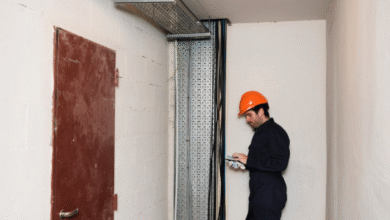Understanding Property Condition Assessments: A Critical Step in Real Estate Decision-Making
Property Condition Assessments

When it comes to investing in, leasing, refinancing, or managing real estate assets, understanding the true condition of a property is essential. Overlooking potential issues can lead to costly surprises down the road. That’s where Property Condition Assessments (PCAs) come into play. These assessments provide critical insights into the physical health of a building, helping stakeholders make informed financial and operational decisions.
What Are Property Condition Assessments?
Property Condition Assessments are comprehensive evaluations of a building’s physical structure and systems. These evaluations typically include visual inspections and reviews of building documentation to assess current conditions, maintenance needs, and potential repair costs. The process results in a detailed report that outlines deficiencies, life expectancies of systems, and cost estimates for short- and long-term repairs or replacements.
PCAs are most commonly used during commercial real estate transactions. Lenders, investors, building owners, and property managers rely on these assessments to evaluate risk, plan capital expenditures, and negotiate terms. Whether it’s a multi-family complex, retail space, office building, industrial facility, or hospitality property, a PCA ensures that decisions are based on fact rather than assumption.
Key Components of a Property Condition Assessment
A standard Property Condition Assessment evaluates the following areas:
-
Site Improvements: Includes parking areas, walkways, drainage systems, landscaping, lighting, and signage.
-
Structural Systems: Focuses on the foundation, load-bearing elements, framing, and roofing.
-
Building Envelope: Examines the walls, windows, doors, and waterproofing elements that separate the interior from the exterior.
-
Mechanical, Electrical & Plumbing (MEP) Systems: Reviews HVAC systems, electrical panels, wiring, lighting, water supply, waste systems, and fire protection.
-
Interior Elements: Includes ceilings, walls, flooring, and common areas.
-
Code Compliance: Checks for ADA accessibility and other regulatory compliance.
-
Deferred Maintenance: Identifies ongoing issues that have not been addressed, often due to budget constraints or oversight.
All findings are summarized in a report that includes photographs, recommendations, and estimated costs for corrective actions. Most PCA reports also include a Capital Reserve Table, outlining anticipated expenses over the next 5 to 20 years.
Who Needs a Property Condition Assessment?
Several stakeholders benefit from Property Condition Assessments:
-
Buyers and Investors: Want to understand what they’re purchasing and avoid unexpected repair costs.
-
Lenders: Use PCA reports to evaluate the collateral for loans and assess the borrower’s risk.
-
Property Managers and Owners: Use PCAs to budget for maintenance and plan for capital improvements.
-
Insurance Companies: May request a PCA to evaluate risk exposure.
In essence, anyone involved in the ownership, operation, or financing of a property can benefit from this comprehensive evaluation.
Benefits of Conducting a Property Condition Assessment
Conducting a PCA offers several benefits, such as:
1. Risk Mitigation
Identifying hidden defects early helps avoid costly surprises post-purchase or lease. Buyers can adjust the purchase price or request repairs based on the PCA findings.
2. Strategic Planning
A PCA provides a roadmap for short- and long-term maintenance. This helps property owners and managers allocate budgets efficiently and plan capital improvement projects.
3. Enhanced Negotiation Power
For investors and buyers, a PCA report can serve as a powerful negotiation tool. If the report uncovers major issues, it may justify a reduced purchase price or seller-funded repairs.
4. Portfolio Management
For firms managing multiple properties, conducting PCAs across assets provides consistency and enables data-driven decision-making for budgeting and capital improvements.
5. Lender Confidence
Lenders feel more confident in financing a property when a recent and reliable PCA is available, reducing the perceived risk associated with the asset.
How the PCA Process Works
The process typically begins with a review of available documentation, including previous maintenance records, architectural drawings, and service agreements. Following this, a qualified inspector—often an engineer or building expert—visits the site to conduct a visual assessment.
During the site visit, they take notes, photographs, and measurements, and speak with on-site personnel to better understand the property’s history. After completing the field assessment, the inspector prepares a report summarizing observations, recommended actions, and cost estimates. This report typically takes 3 to 10 business days to complete, depending on property size and complexity.
Why Experience and Expertise Matter
A high-quality PCA depends on the expertise of the professionals conducting it. The ability to identify subtle signs of structural damage, aging infrastructure, or code violations can greatly influence the accuracy of the final report. Experience also plays a key role in developing realistic cost estimates and recommendations.
That’s why it’s important to work with a firm that specializes in building assessments, engineering, and real estate due diligence. Choosing the right partner ensures that your interests are protected throughout the property transaction or management process.
Choose Prema Consulting Group for Trusted Property Condition Assessments
At Prema Consulting Group, we deliver in-depth Property Condition Assessments tailored to meet your specific needs. Whether you’re acquiring, leasing, refinancing, or managing a commercial property, our licensed engineers and building experts provide the technical insight and clarity you need to make confident decisions. Our reports are clear, concise, and actionable—designed to help you manage risks and safeguard your investments.
Final Thoughts
In an ever-changing real estate market, thorough due diligence is more important than ever. Property Condition Assessments serve as a cornerstone of smart property ownership, investment, and management. By uncovering issues early and providing a path forward, these assessments help protect both your capital and your peace of mind. Don’t rely on assumptions—let a qualified assessment guide your next real estate decision.




